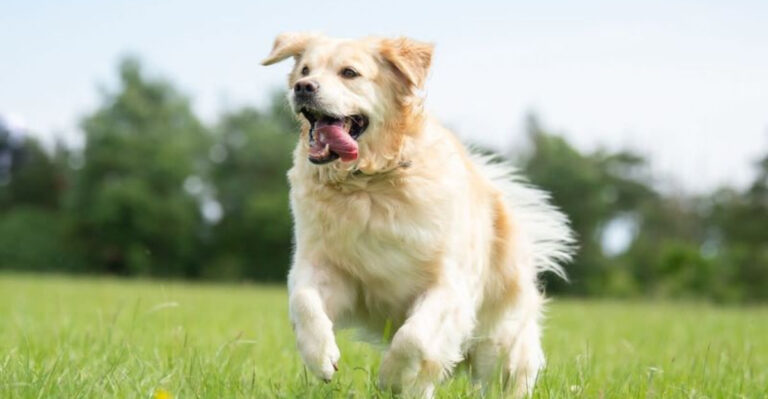15 Fascinating Reasons Why Dogs Tilt Their Heads

Ever catch your dog tilting its head like it’s trying to understand every word you say? That curious little gesture melts hearts and sparks plenty of questions.
While it may look like pure cuteness, there’s more behind the tilt than you’d expect. From better hearing to reading your emotions, dogs have some fascinating reasons for that sideways stare.
1. Hearing Better

A dog’s head tilt can be an attempt to hear better. Just like a satellite dish, those furry heads adjust to capture sound waves more effectively.
This action helps them zero in on specific sounds, like a distant whistle or a faint call. By tilting their head, dogs fine-tune their hearing, picking up subtle noises their humans might not notice.
2. Understanding Us

Dogs often tilt their heads when interacting with humans, trying to understand our expressions or tone of voice. It’s a sign of their eagerness to connect and comprehend.
This gesture can be heartwarming, showcasing their desire to bond with us. They’re not just listening; they’re trying to figure out our emotions through every word and gesture.
3. Visual Adjustment

Ever noticed dogs tilt their heads when you show them something? It’s their way of adjusting their view. Just like humans squint to see better, dogs tilt their heads to align their eyes properly.
This helps them get a clearer picture of what you’re showing them, whether it’s a treat or a new toy, enhancing their visual understanding.
4. Expressing Curiosity

Curiosity doesn’t just belong to cats. Dogs, too, have a curious nature, and tilting their heads is a common way they express it.
When something piques their interest, such as a new sound or a moving object, they tilt their heads to focus better.
5. Emotional Connection

Head tilting can be a sign of an emotional connection between a dog and its owner. It’s akin to how humans nod in understanding.
When a dog listens and tilts its head, it may be reflecting empathy or shared feelings. This behavior builds a strong bond, showing the dog’s capacity to relate and respond to the emotional nuances of its human companions.
6. Signaling Playfulness

Dogs are playful creatures, and a head tilt can be part of their playful antics. When they tilt their heads, it might be an invitation to play or a response to a playful stimulus.
This gesture adds an element of charm to their playful demeanor, making interactions more engaging.
7. Echoic Memory

Have you ever noticed a dog’s head tilt when you mention a familiar word? This can be linked to echoic memory, which is the ability to recall sounds.
Dogs tilt their heads to reinforce sound memories, especially with commands they’re trying to remember. It’s a fascinating insight into how dogs process auditory information, enhancing their learning and recall abilities.
8. Facial Expression Reading

Head tilting may help dogs get a clearer view of human expressions, making it easier to read subtle emotional cues. Adjusting their perspective allows for more accurate interpretation of our moods.
That simple motion reflects a deep connection and an impressive level of emotional awareness.
9. Habitual Behavior

Sometimes, head tilting becomes a habitual behavior for dogs. Repeated exposure to certain situations or sounds can lead dogs to habitually tilt their heads.
This endearing routine might not always have a specific reason, but it’s part of their unique personality. It’s one of those quirks that make each dog special, showing their individual traits and habits.
10. Learning And Instinct

Natural instincts often guide a dog’s actions, especially when learning something new. Tilting the head may help them concentrate and better process unfamiliar sounds or commands.
That simple movement offers insight into how they adapt and engage with the world around them.
11. Balancing Act

Head tilting could also be linked to a dog’s sense of balance. When navigating tight spaces or tricky terrains, tilting their heads helps them maintain equilibrium.
This subtle adjustment aids in their graceful movement, allowing them to tackle physical challenges with ease.
12. Exploring New Sounds

Exploration is in a dog’s nature, and new sounds can prompt a head tilt. When encountering unfamiliar noises, dogs tilt their heads to pinpoint the source and understand it better.
This behavior is part of their investigative instinct, allowing them to assess their surroundings with keen awareness.
13. Sensitivity To Tone

Dogs are incredibly sensitive to tones of voice. A shift in your tone can trigger a head tilt as they try to interpret the change.
This reaction is a testament to their attentiveness and desire to communicate. By tuning into our voices, dogs strive to understand us better, deepening the connection between pet and owner through attentive listening.
14. Showing Affection

Tilting the head can be a quiet sign of affection, almost like a gentle nod of love. That sweet glance often deepens the emotional bond between dogs and their humans.
Few gestures are as simple yet powerful in expressing connection and trust.
15. Conditioned Response

Conditioned responses often shape how dogs react to familiar sounds or phrases. A tilted head might signal recognition of something exciting or rewarding.
That behavior highlights just how sharp and adaptable they can be in their everyday routines.






